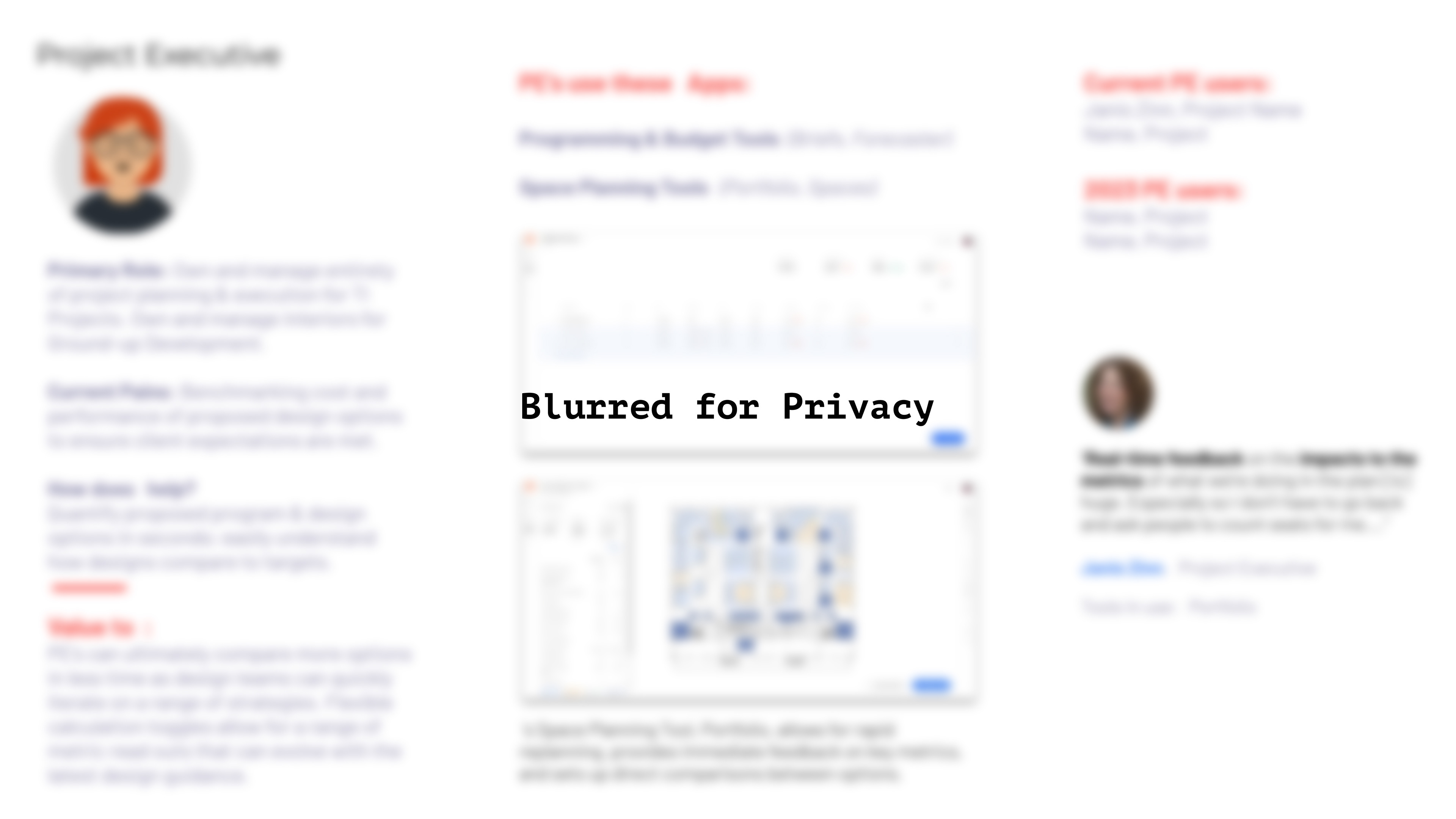WHAT I DID
-User Interviews
-Desktop Research
-Developed Personas
-Stakeholder Presentations
-Built Persona Repository
THE BRIEF
When I started on a year-long project to develop real estate planning tools, we initially faced a significant challenge: a lack of clarity about our target end users. This ambiguity stemmed from the complexity and size of the organization we were designing for. Furthermore, the neatly defined roles within the organization did not reliably indicate whether individuals would use our tools.
To address this, I adopted a holistic approach that included both role-based personas and task-based personas. This dual strategy allowed us to understand both the organizational structure and the specific tasks and types of work being performed. By categorizing groups of users and analyzing their interactions with our tool, we gained valuable insights into their goals and workflows.
This comprehensive understanding not only clarified user needs but also informed product decisions, enabling us to better align our tools with the actual requirements and objectives of the end users. Ultimately, this approach enhanced the relevance and usability of our real estate planning tools, ensuring they effectively met the diverse needs of the organization.
The creative names were fun and something that all the team members quickly adopted and built a shared understanding of how and why users would use our tools.
Detailed Persona By Task
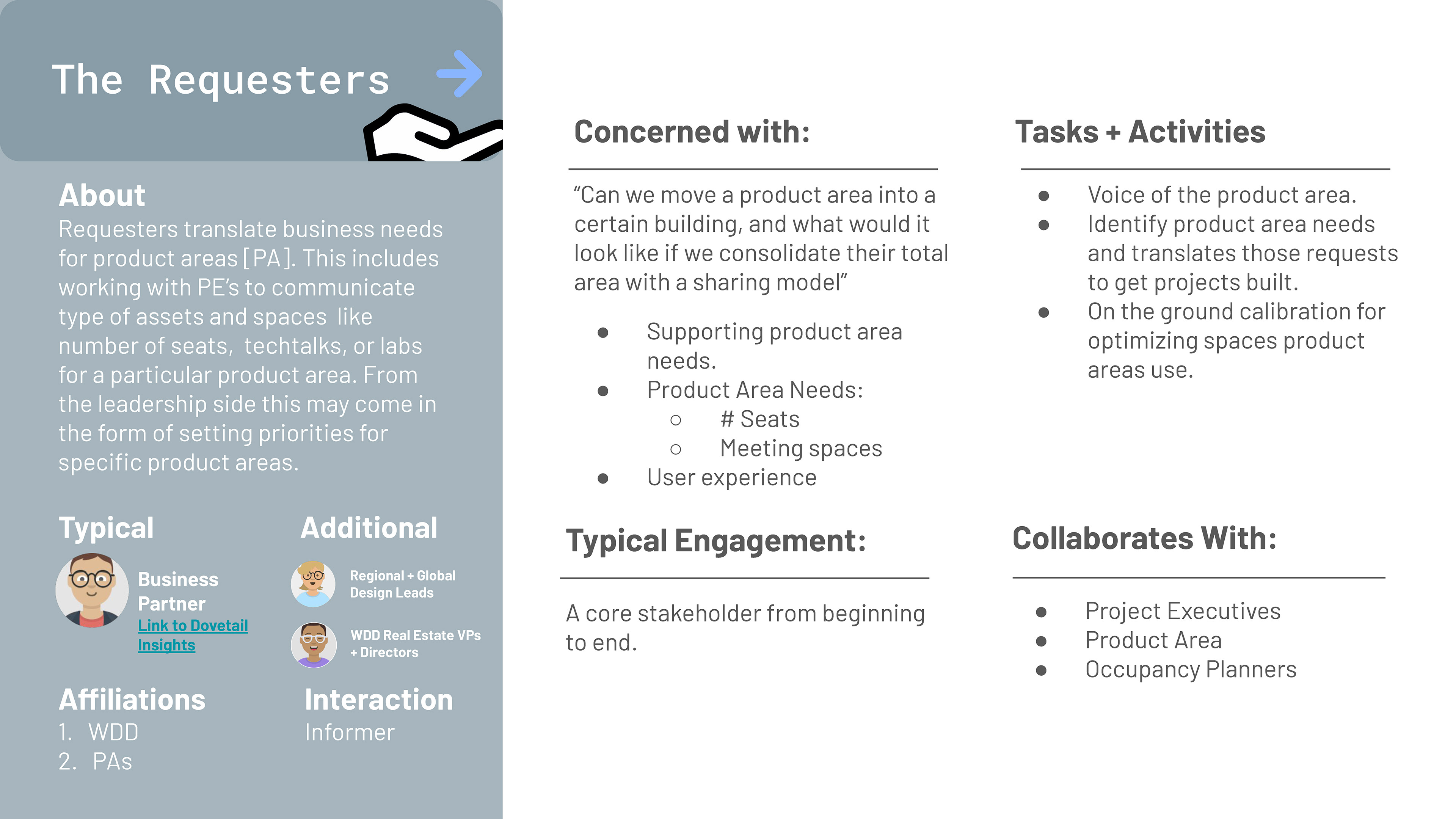
Detailed Persona By Task
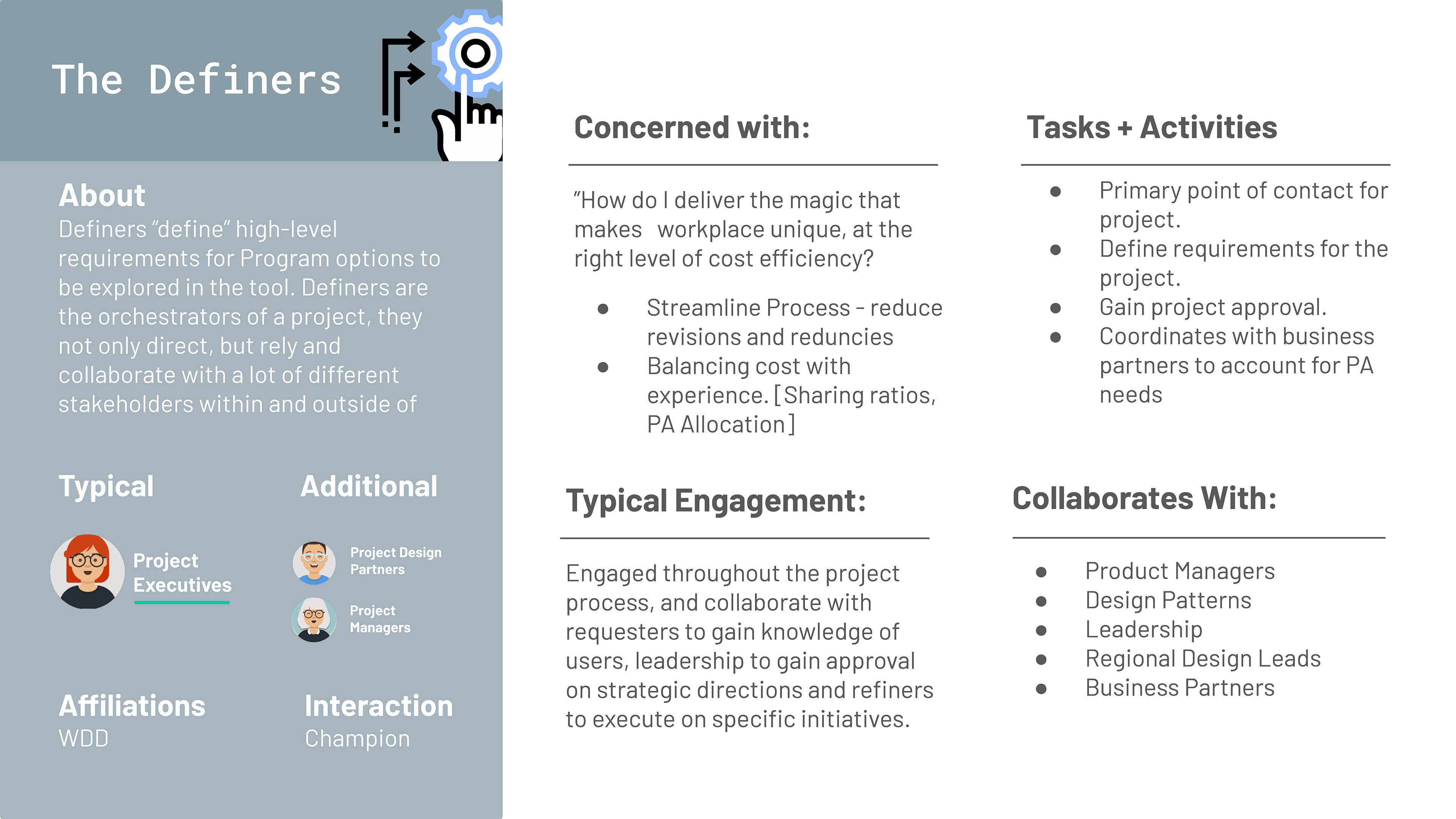
Detailed Persona By Task
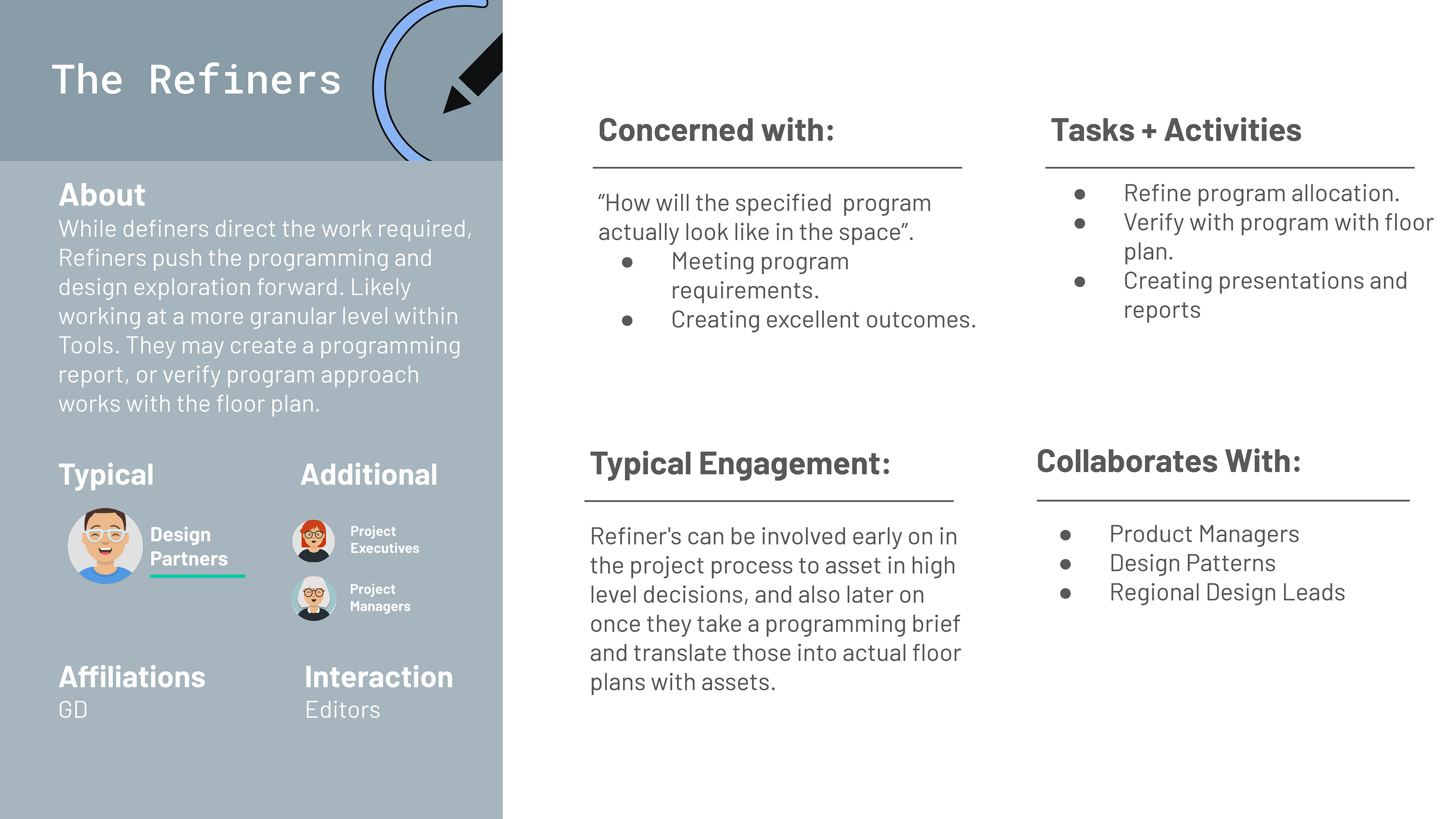
Detailed Persona By Task

Detailed Persona By Task
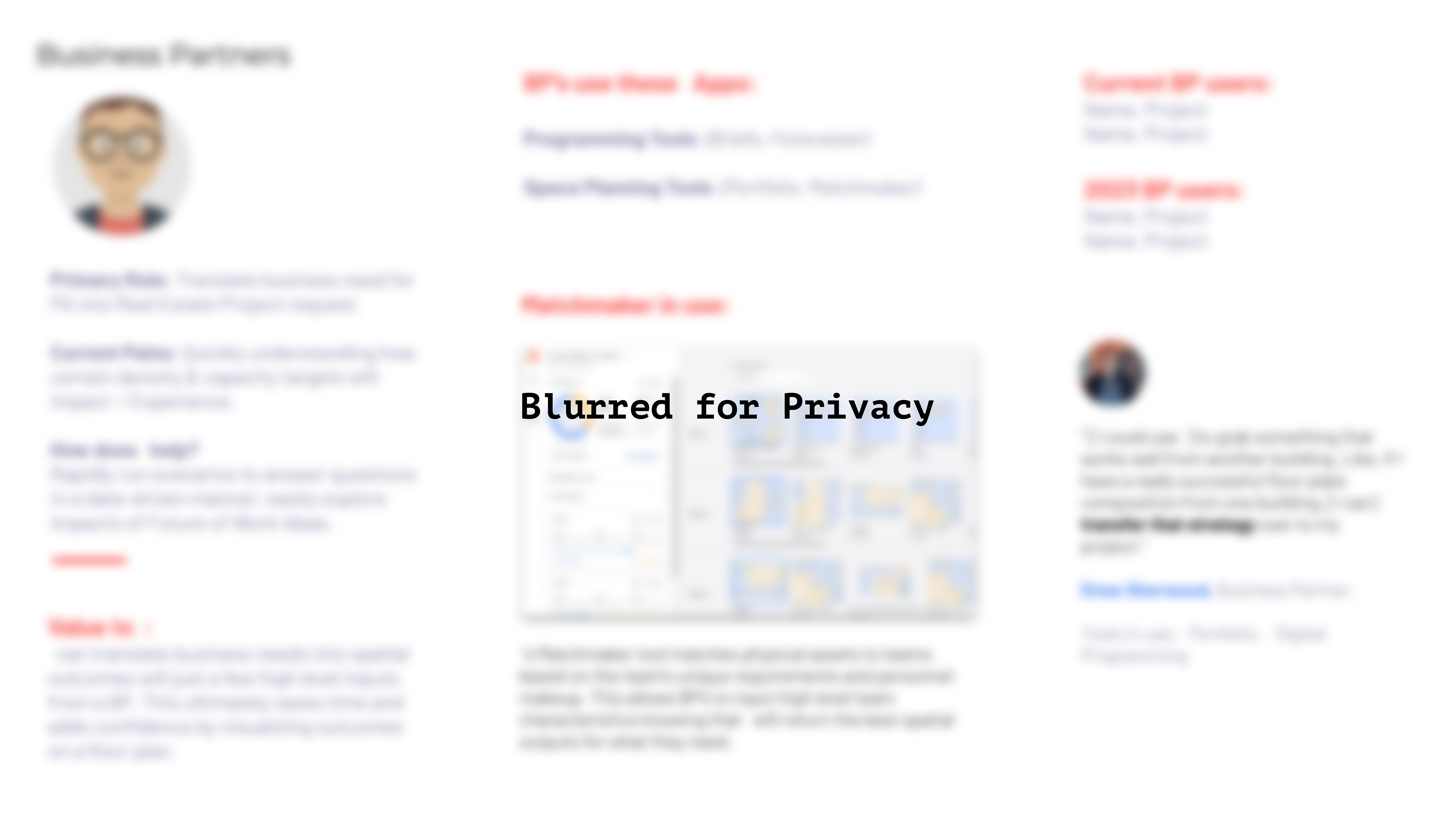
Persona Based on Role
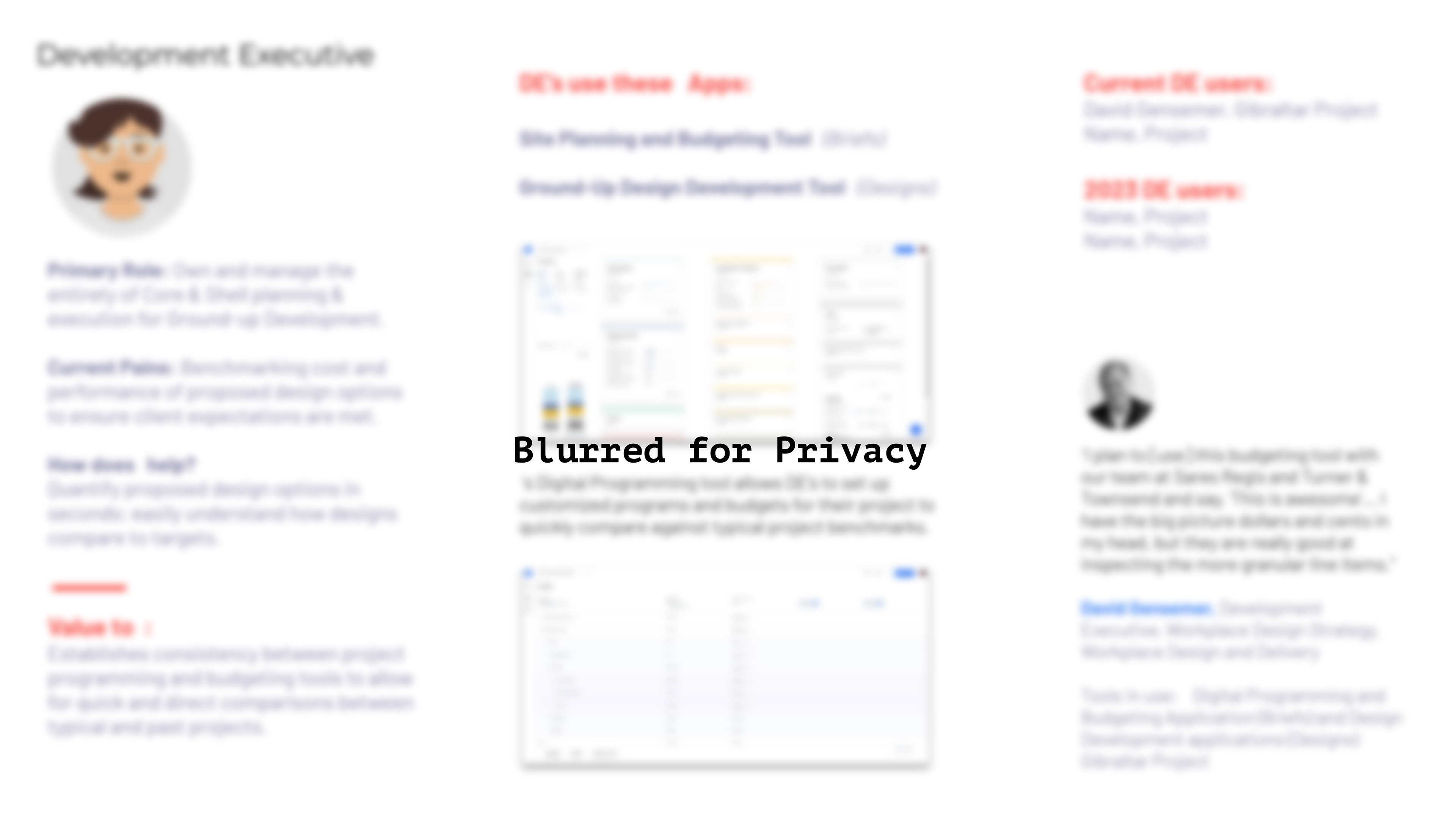
Persona Based on Role
